목차
Digital Signatures
Digital signature: Alex wants to send a message and proves that the message came from him

Goals for a Digital Signature
Authenticity (진위)
- Binds an identity (signer) to a message
- Provides assurance of the signer
Unforgeability (위조 불가능성)
- An attacker cannot forge a signature for a different identity
Non-repudiation (부인 방지)
- Signer cannot deny having signed the message
Integrity (진실성)
- An attacker cannot take a signature by George for a message and create a signature by George for a different message
Digital Signatures in practice
Use symmetric key encryption
- requires previous secure communication
- only works with single recipient
Can we use public key encryption? --> yes (how we make digital signatures)
Digital Signature with Public-Key Encryption
In a public-key cryptosystem (e.g. RSA), we can ofter reverse the order of encryption and decryption
E_PK (D_SK (M)) = M = D_SK (E_PK (M))
Alex "decrypts" plaintext message M with the secret key and obtains a digital signature on M
sign (M, SK) {
return S = D_SK (M)
}
Knowing Alex's public key, PK, Harm can verify the validity of signature S on M
Harm "encrypts" signature S with PK, and checks if the result is message M
verify(M, S, PK) {
return (M == E_PK (S) )
}
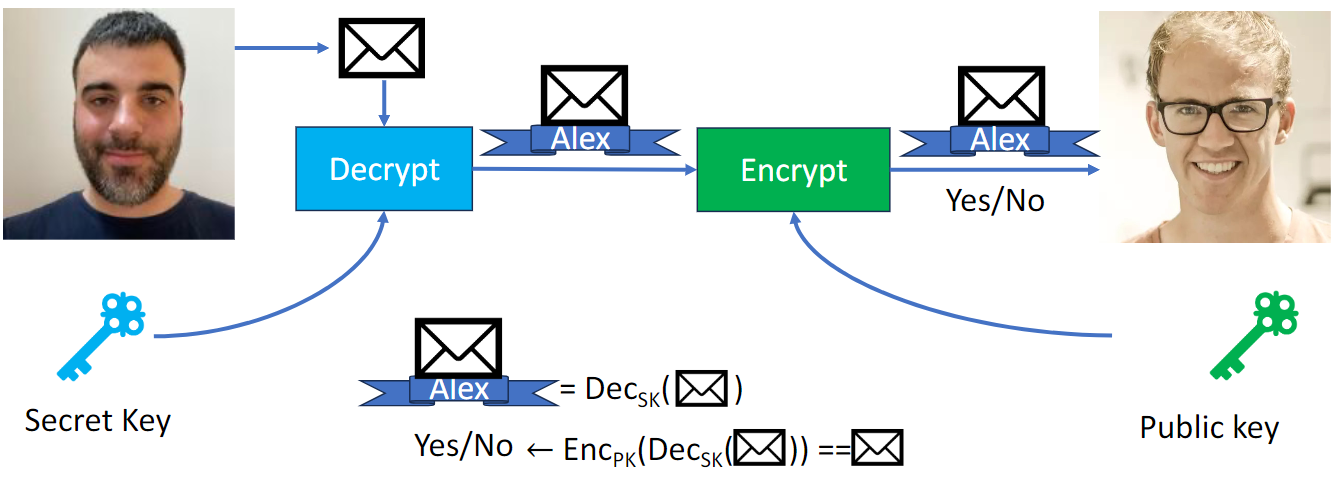
Signing Hashes
Basic method for public-key digital signatures
- Signature as long as the message
- Slow public-key encryption/decryption
Preferred method
- Sign a cryptographic hash of the message
- Hash is short and fast to compute
Sign: S = D_SK (h(M))
Verify: h(M) == E_PK(S)
Security of signing hash
- Security of digital signature
- Collision resistance of hash function
Question
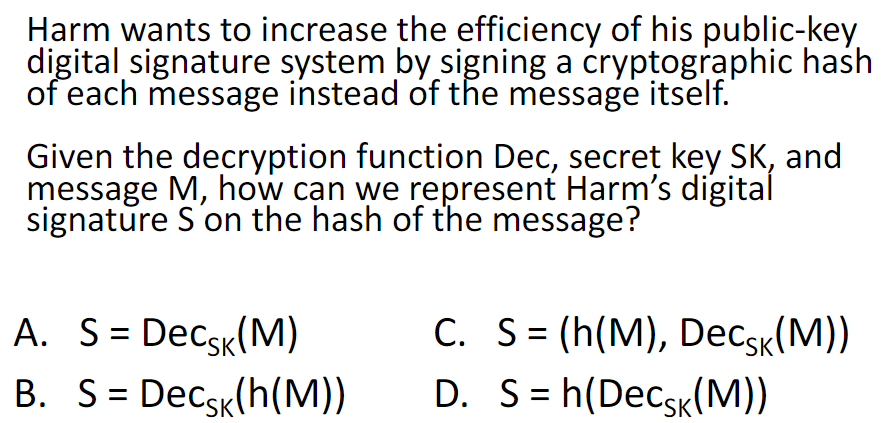
답: B (decrypt the hashed message)
Question
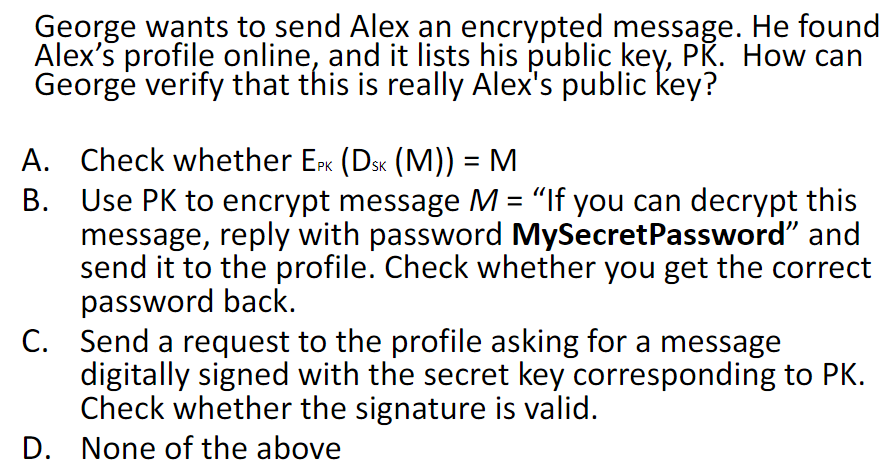
답 : D (None of the above)
George cannot use method A since he does not have the private key. Also, it's unclear what message M would be in this method.
Methods B and C assure George that he is interacting with a party who has possession of the private key corresponding to the posted public key. However, they do not prove this party is Alex.
Send a message securely
Alex wants to send a message that only Harm can read and that only he can have sent.
Requirements:
- Confidentiality of all communication
- Harm understands he is communicating with Alex
Message M needs to be encrypted and digitally signed
Active adversary can eavesdrop and modify messages
Adversary knows:
- PK_Alex
- PK_Harm
Encrypt then Sign
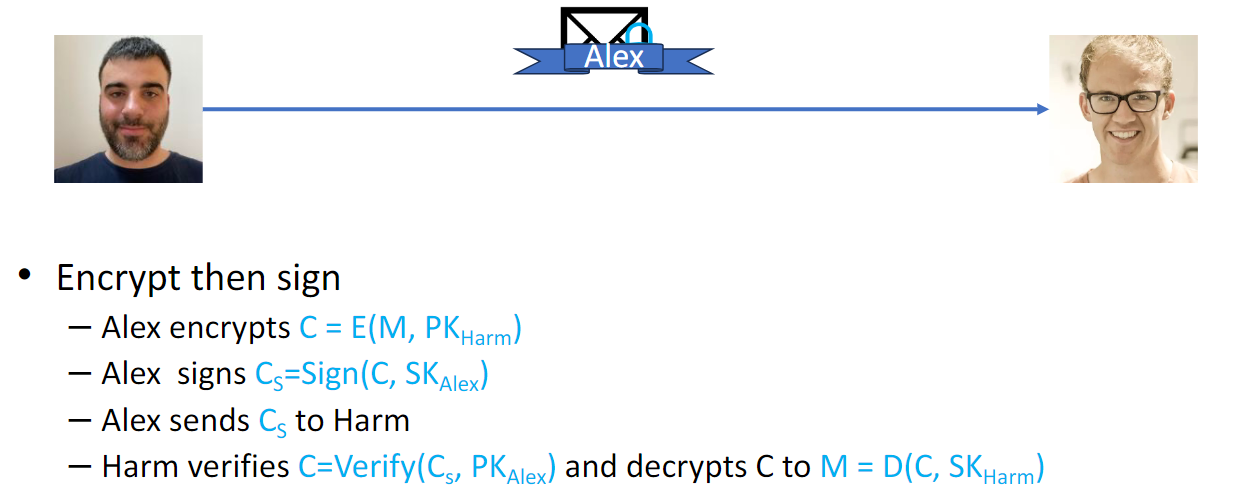

Attack:
- Lilika replaces S with her signature S' on Cs, and forwards (C, S') to Harm
- Harm now thinks he is communicating with Lilika
- Lilika can then forward Harm's response (intended for Lilika) to Alex
This can be dangerous:
- during a transaction
- Authentication protocol
To fix it, sign then encrypt.
Sign then Encrypt
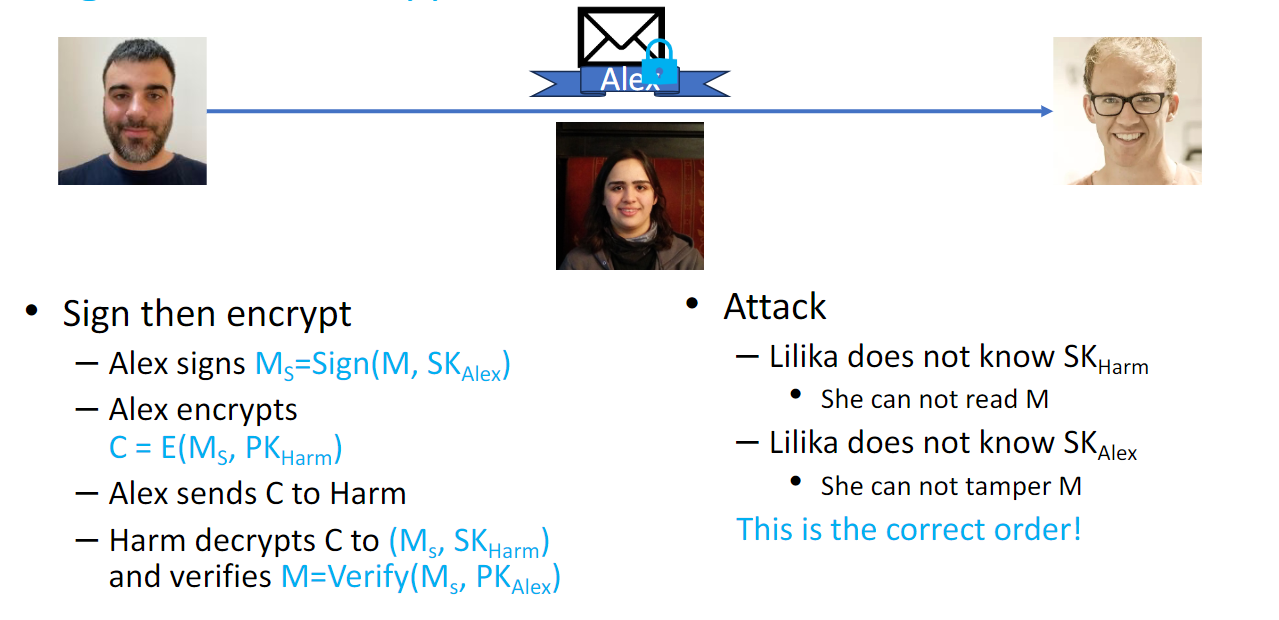
Relying on Public Keys
The verifier of a signature must be assured: the public key corresponds to the correct party
The signer should not be able to deny the association with the public key
A trusted party could keep and publish pairs (identity, public key)
- e.g. government, private organizations
What isf the private key is compromised(stolen)?
- Need for key revocation (폐지) mechanism
MAC
Message Authentication Codes (MACs)
Similar to Digital Signatures, but symmetric
- Therefore does not provide non-repudiation (부인 방지) (anyone who can verify the message can also sign it)
MAC provides a guarantee that a message came from a certain sender and has not been changed.
MAC Properties
Unforgeability (위조 불가능성)
- Even after seeing many MAC-message pairs, an attacker cannot produce a valid MAC for a new message
Integrity (진실성)
- If the MAC or the message is altered, the recipient can detect it
Implementing MACs
Block Ciphers
CBC-MAC
- Using a block cipher in CBC mode, encrypt a message and use the last cipher block as a MAC
- requires some tweaks. You must:
→ fix the IV (Initialization Vector)
→ prepend each message with its length (if an attacker sees a lot of messages, then can generate a longer message?)
Cryptographic Hash Functions
HMAC
- Use hash function and a shared secret
Theoretical construction: H(M | | K)
- In practice:
→ Length extension attacks for some hash function
MAC then Encrypt (MtE)
E (Message || MAC(Message))
MtE was used by TLS (although with special padding schemes)
Does not provide integrity of ciphertext, only plaintext
Not proven to be secure in general case
MAC and Encrypt (M&E)
(E(Message), MAC(Message)
Can leak message equality even if the encryption does not
Not proven to be secure (MACs do not give confidentiality)
Encrypt then MAC (EtM)
(E (Message), MAC(E(Message))
Integrity guarantee on both ciphertext and plaintext
Generally recommended order of operations
Key Exchange
Diffie Hellman Key Exchange
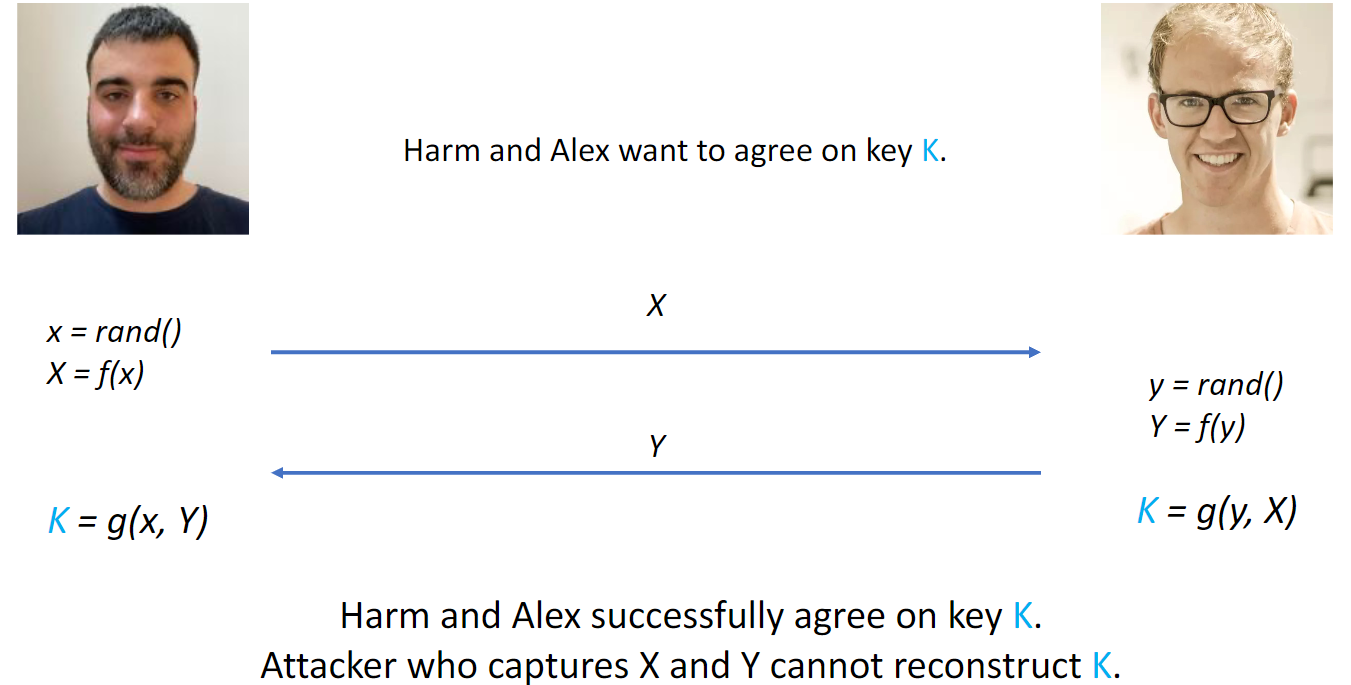
Vulnerable to man-in-the middle attack (can capture X and not let Harm see it)
*DH key exchange is prone to man in the middle attack, because it does not provide authentication of participating parties.
Man-In-The-Middle Attack
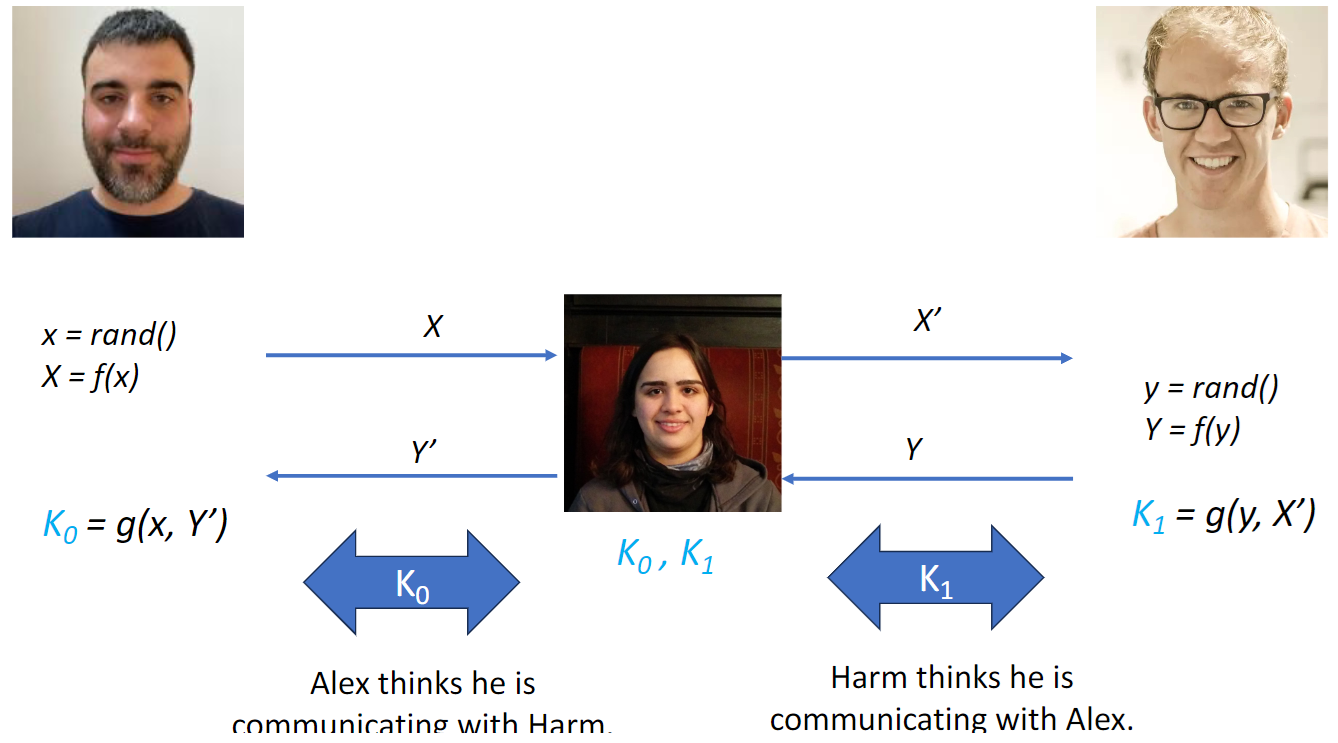
They both think they agreed on the key
Solution: Alex and Harm digitally sign X and Y respectively. Requires each to know the public key of the other.
Modular logarithm is hard: No efficient algorithm is known to compute x given y
Diffie Hellman is built upon this
Diffie Hellman Key Exchange

g and p are public parameters
Merkle Trees
Collision-Resistant Hash Functions
It is hard to find a pair of plaintexts P and Q such that h(Q) = h(P)
Merkle Trees
- Hash Tree
- Prove membership
- Prove append-only
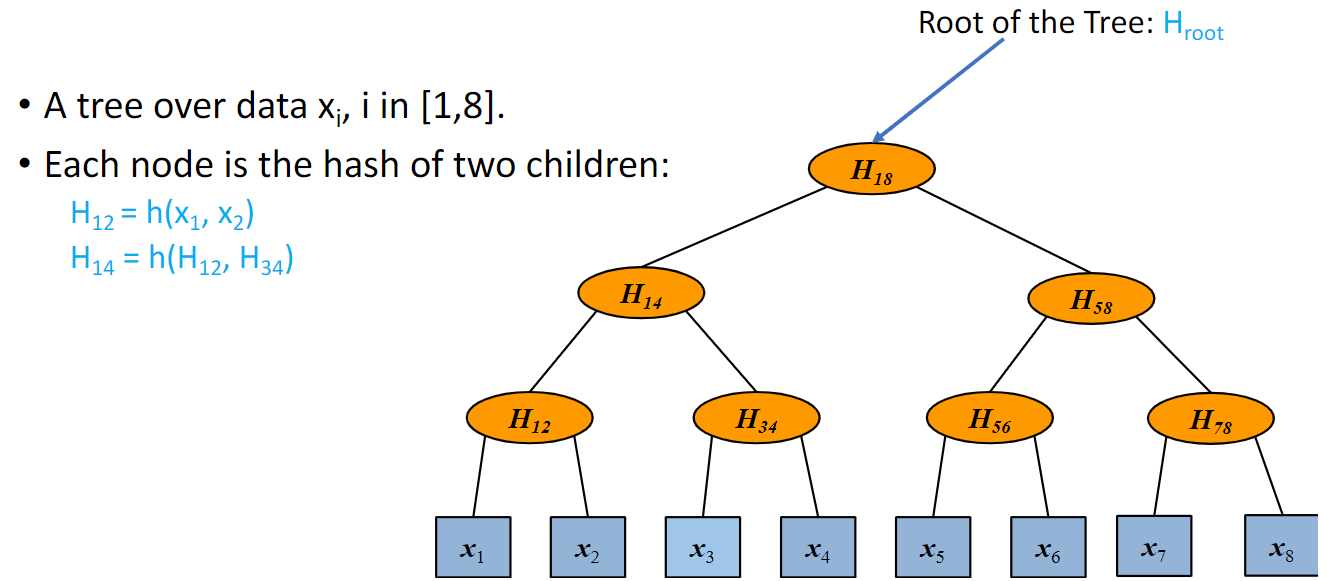
Proof of Membership
Alex stores a Merkle Tree and gives Harm H_root.
Can Alex prove to Harm that x4 is one of the elements of the Merkle Tree?
Provide the path + siblings → Authentication path
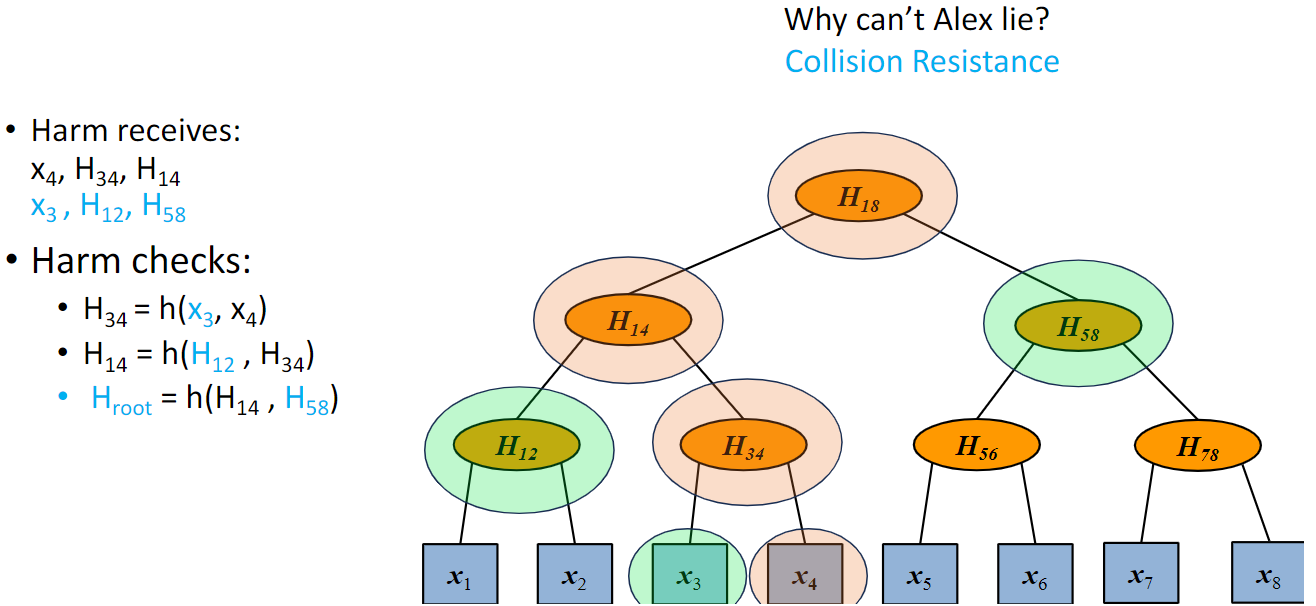
Applications: Secure Cloud Storage
Problem: File integrity
Alex stores his fiels in a cloud server managed by Harm
Alex later receives the files
What if Harm tampered with the files?
Solution:
Alex computes the cryptographic hash of each file and stores them locally
Alex checks the cryptographic hashes of the retrieved files against the stored ones
This requires Alex to store one hash per file
Better solution:
Alex computes a Merkle tree over his elements and stores H_root locally
When requesting element x_i, Alex also requests the authentication path
Alex verifies that the authentication path is correct and matches his root H_root.
Application: Certificate Transparency Logs
Web certificates
- A certificate that proves the identity of a website
Certificate Authority (CA)
- Trusted entity
- Verifies identity of website
- Issues certificates
Users trust that ing.com belongs to ING if there is a signed certificate because we trust that the CA verified ING's identity.
Given a certificate, how can we tell if it's corrupted or not?
→ Distributed public logs of certifiactes
The log is an ever growing Merkle Tree
Goal: Ensure transparency
→ Everyone sees the same certificates, both the user and the certificate owner
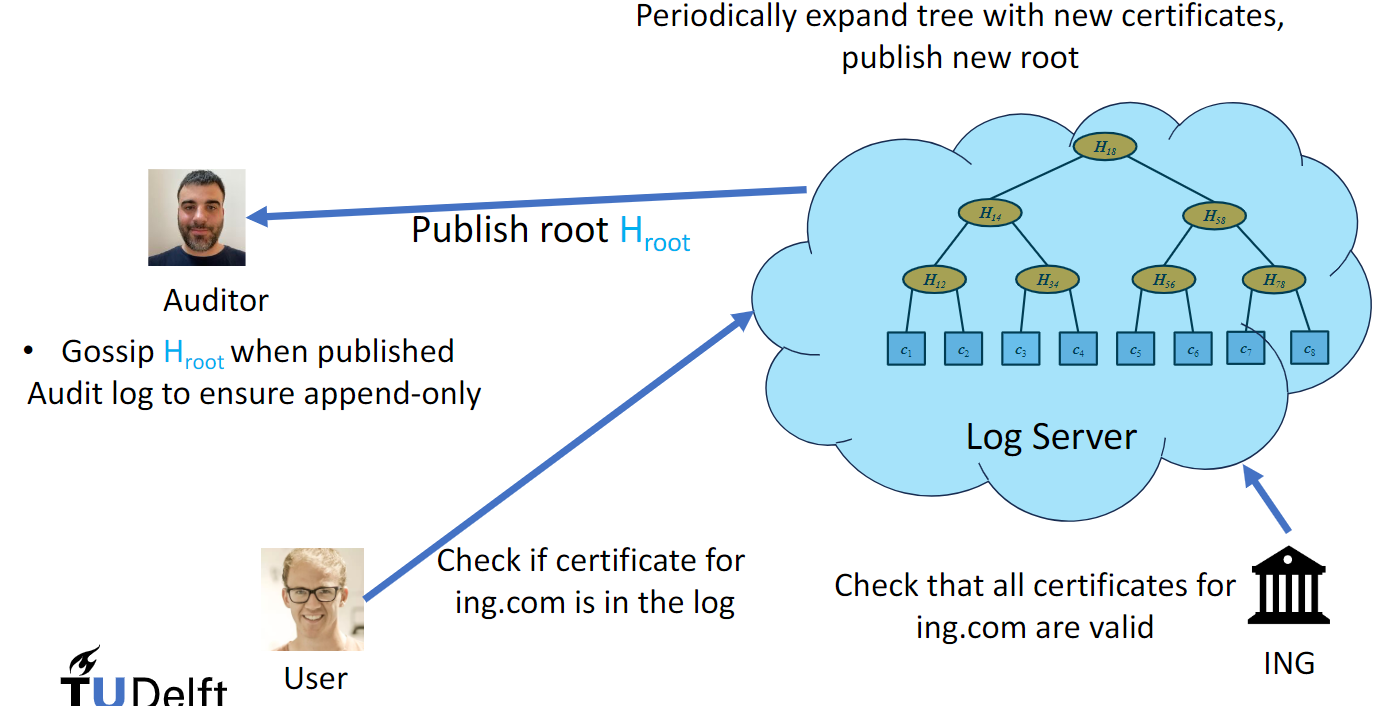
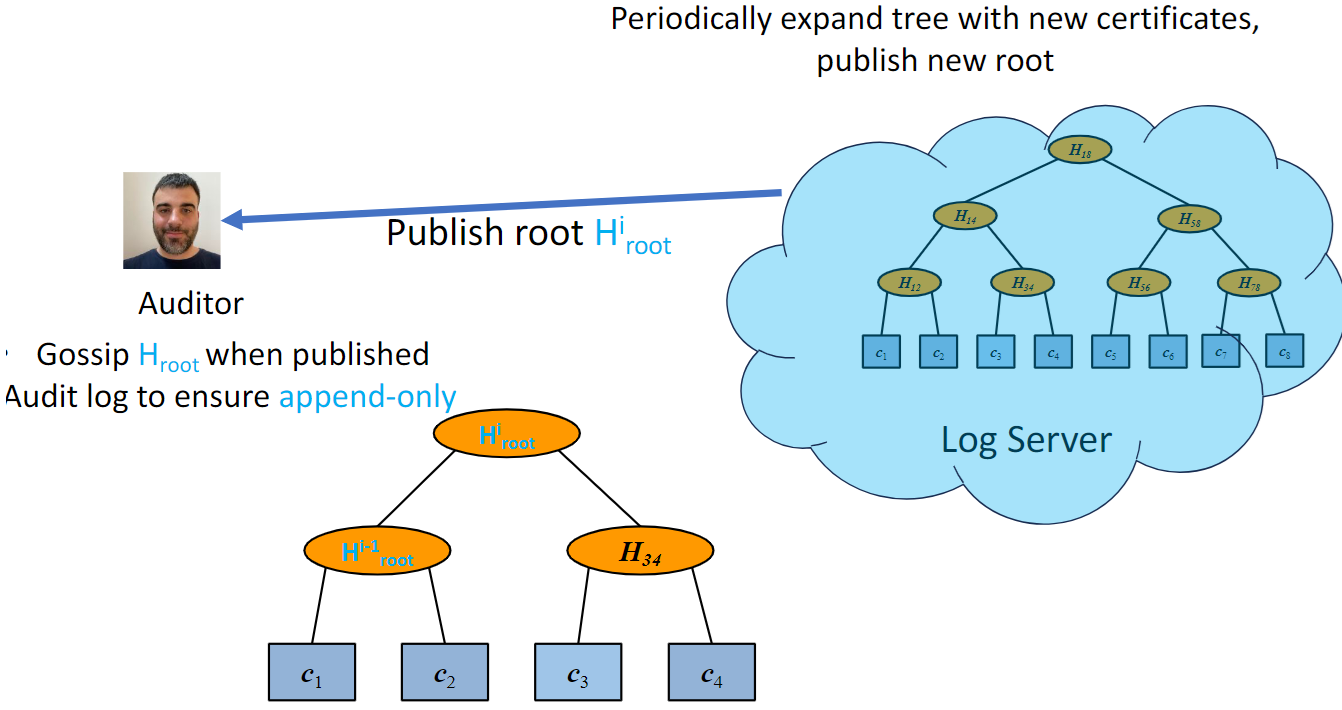
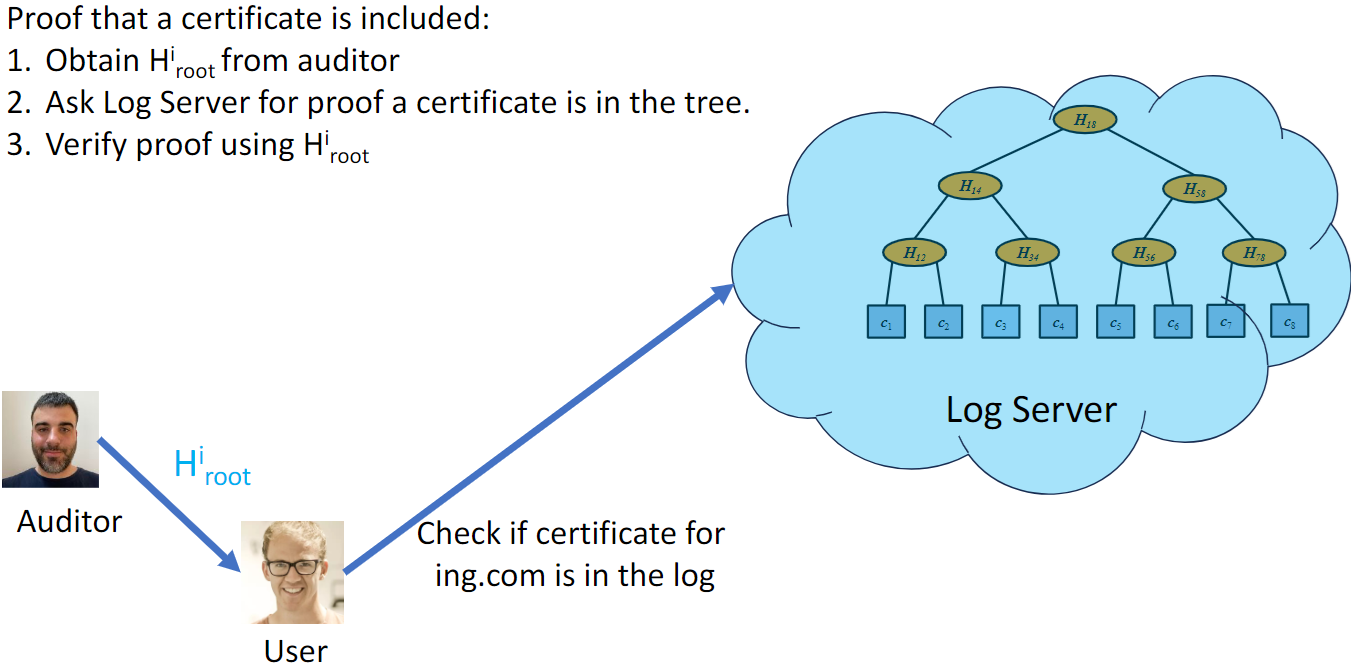

In summary:
Given a certificate, how can we tell if it's corrupted or not?
Transparency
→ All valid certificates are publicly available
→ Invalid certificates can be quickly detected and revoked.
'학교 > CS' 카테고리의 다른 글
| Lecture 12: Software Security and Testing (1) | 2024.04.08 |
|---|---|
| Lecture 11: Cryptography 4 (0) | 2024.04.08 |
| Lecture 9: Cryptography 2 (1) | 2024.04.07 |
| Lecture 8: Cryptography 1 (1) | 2024.04.06 |
| Lecture 7 pt 2: Background for Software Security and Testing (0) | 2024.03.18 |




댓글